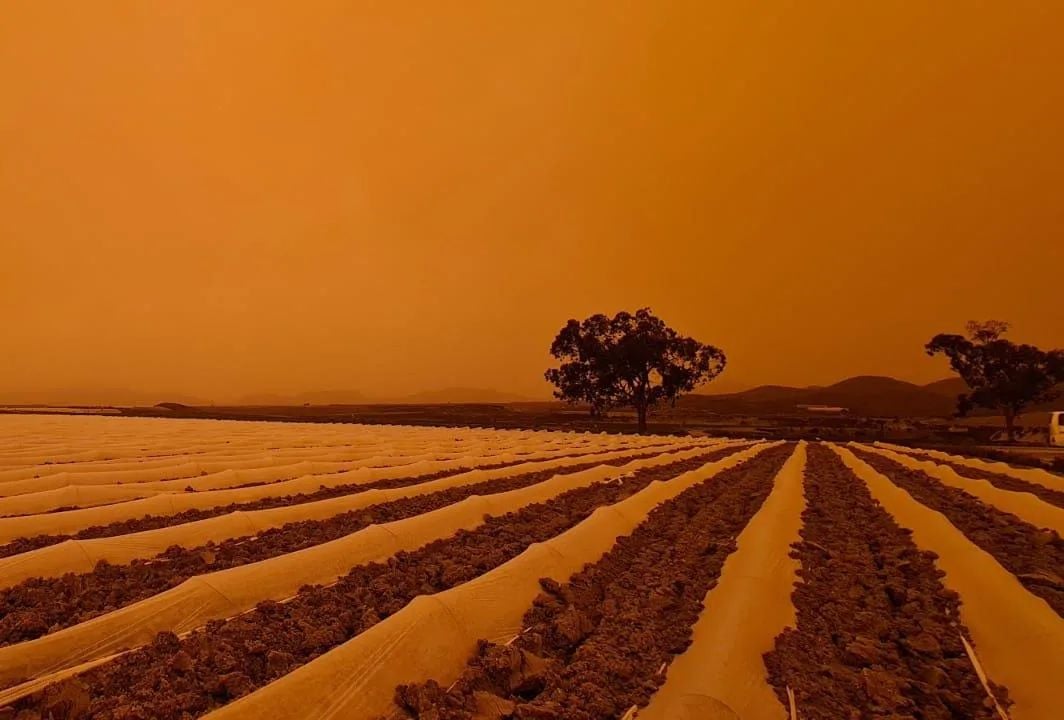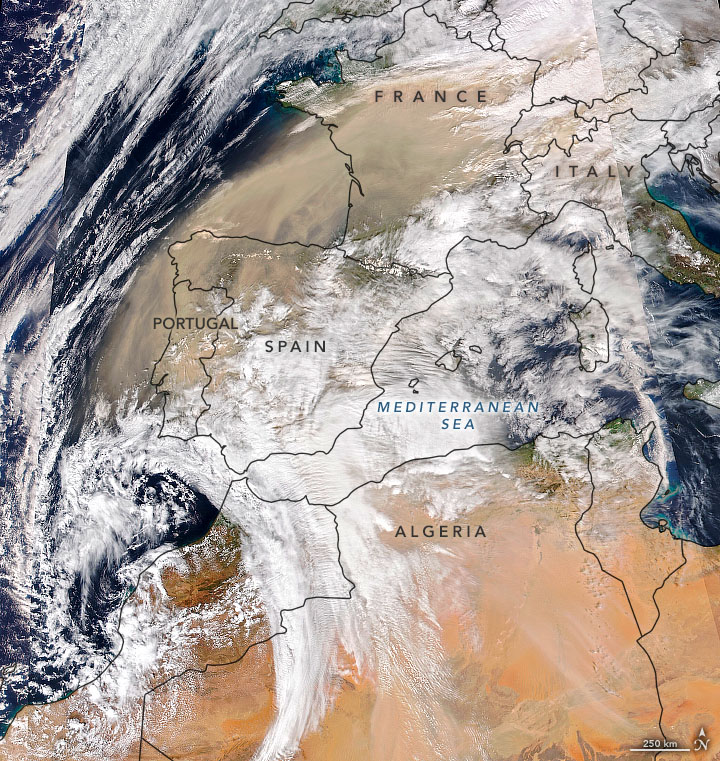
A massive plume of dust and sand from the Sahara Desert engulfed parts of Europe in mid-March. Storm Celia blew into Spain on March 14, 2022, turning the skies into an eerie rusty orange and covering the ground and vehicles with fine sand particles. The thick dust layer lingered for several days, causing officials to issue extremely poor air quality ratings in the capital city of Madrid and across large parts of Spain's southeast coast.
While Spain bore the brunt of the sandstorm, its impact was felt across a large swath of the continent — from Portugal to Germany to the United Kingdom. The dust plume turned the pristine white snow in the French Alps orange, enabling skiers and snowboarders to create colorful lines across the soft powder. Meanwhile, a downpour in Paris, France, blanketed roads and cars with blobs of mud. Fortunately, the event was short-lived and a distant memory by the end of the week.
Officially known as the "Saharan Air Layer," dust clouds fairly common phenomenon. Each year, during late spring, summer, and early fall, strong wind currents blowing across North and West Africa pick up millions of tons of sand and transport it for hundreds, if not thousands, of miles. The sand cloud's ultimate destination depends on the season and wind direction. It can get carried westward over the tropical Atlantic Ocean to the Amazon rainforest and the Caribbean Sea. When the winds blow in a northerly direction, the high altitude dust layer can also be transported to Europe, as was the case this time.

Though dust storms can be disruptive and cause respiratory issues for some, they have many benefits. The dry air associated with the Saharan Air Layer can stop storms from gaining strength during the summer hurricane season in the Atlantic Ocean. The sand also brings much-needed phosphorus — an essential ingredient for plant growth — to the Amazon rainforest. The nutrients in the sand are also believed to be responsible for the beautiful coral reef that thrives in the Bahamas. Experts assert that the waters around the islands otherwise lack the minerals to create such an oasis.
Resources: Washingtonpost.com, Earthsky.com, CBS12.com, CNN.com
